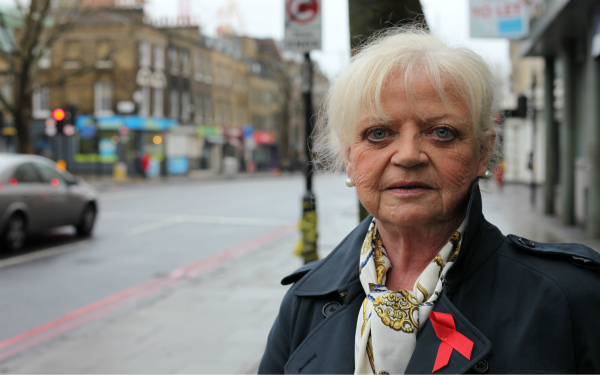
By Alice Booth
Care homes and HIV.
These aren’t generally terms one expects to hear in the same sentence; but in the not-too-distant future, they will be.
Thanks to medical advances, people with HIV are living longer than ever before. This is extremely positive news – but it also means we are entering uncharted territory. The fastest growing group of people in the UK living with HIV is the over 50s, representing one third of those affected.
Within the next two decades, we will have an acute problem in terms of how we support this new and fast-growing population and I’m not sure the social care sector is ready.
Perfect storm
A perfect storm is brewing. We’ve got more and more people facing old age while living with HIV, a highly stigmatised and misunderstood condition, while we have exactly zero experience of HIV in older age.
At the same time, we have a social care sector that’s already busting at the seams. There is chronic loneliness and poverty among the ageing HIV population, as was been revealed in a recent Terrence Higgins Trust report, Uncharted Territory. We could see a real crisis within the next few years, as more of those diagnosed at the start of the epidemic enter their 70s, 80s and 90s.
It’s a particular issue where I work in Brighton, where we have the second highest HIV prevalence outside London. I’ve worked in HIV for four years, and recently I’ve been co-ordinating the Terrence Higgins Trust’s Health, Wealth and Happiness Project for the over 50s.
Isolation and anxiety
Many of my clients are older gay men, who were diagnosed in the 1980s and 1990s, before HIV treatment was available and life expectancy was only a few years. Many of these clients don’t have family support, and many have become isolated due to fear of social rejection.
I hear a lot of anxiety from clients about having to go back into the closet if they go into a care home, and then on top of that having to disclose their HIV status in an environment where it might be shared, and where they may be ostracised from their peers. Some worry they’d need to hide their medication from home carers for fear of their reaction.
In 2017, this shouldn’t be an issue. But it is.
On top of this, many cashed in their pensions when they were told they were facing a death sentence. Here they are today and 88% haven’t made any financial plans concerning their future care.
My role is to address the complex needs of people ageing with HIV and help them to live well, while facing the uncertainty of what lies ahead. We hold wellbeing days, group support sessions and workshops covering everything from how to order shopping online, to financial arrangements like wills and pensions.
HIV myths
A key part of my role is delivering training on HIV awareness within care homes and other social care providers. I’ve actually been pleasantly surprised by how receptive they’ve been towards the training – but during the sessions, you nearly always hear staff repeat the same myths around HIV that you still hear from the general public. These myths were widespread in the 1980s and are still deeply entrenched today.
For example, we’re often asked, “do I need to wear two pairs of gloves while giving personal care if my client has HIV?”, or “do I need to disclose the client’s HIV status to all staff working in the care home?”.
My answers are simple: no, and no.
There is no reason to treat someone living with HIV any differently, other than to support them to take their medication and to be mindful of the potential for stigma and discrimination.
You cannot transmit HIV from skin-to-skin contact or from saliva. The virus does not survive long outside the body so you cannot get HIV from towels, toilet seats or any other household item.
No risk of transmission
But most importantly (and this is where things have changed far more swiftly than public awareness) people who are on effective HIV treatment cannot pass on the virus at all. This is because current HIV treatment works by reducing the amount of the virus to undetectable (and therefore uninfectious) levels. If more people knew this, the stigma would surely decrease.
Older people living with HIV aren’t a tricky or problematic group. Usually, getting it right is just common sense. It’s a case of respecting their confidentiality, ensuring you have an up-to-date understanding of HIV, and supporting them to access local resources and networks, like the Health, Wealth and Happiness Project.
But most importantly I think it’s about remembering that your client is part of the first generation facing old age with HIV. We know this is coming and those working in social care are getting more and more likely to encounter someone with these needs.
As social care professionals, as charities and as members of society, we must be thinking ahead – and we must stand with this new community as they face the path untrodden.
Alice Booth is coordinator of the Health, Wealth and Happiness project run by the Terrence Higgins Trust in Brighton


 Family help: one local authority’s experience of the model
Family help: one local authority’s experience of the model  ‘I spent the first three months listening’: how supportive leadership can transform children’s services
‘I spent the first three months listening’: how supportive leadership can transform children’s services  How senior leaders in one authority maintain a culture of excellence
How senior leaders in one authority maintain a culture of excellence  How staff support ensures fantastic outcomes for children and families
How staff support ensures fantastic outcomes for children and families  Workforce Insights – showcasing a selection of the sector’s top recruiters
Workforce Insights – showcasing a selection of the sector’s top recruiters 

 Facebook
Facebook X
X LinkedIn
LinkedIn Instagram
Instagram
Comments are closed.